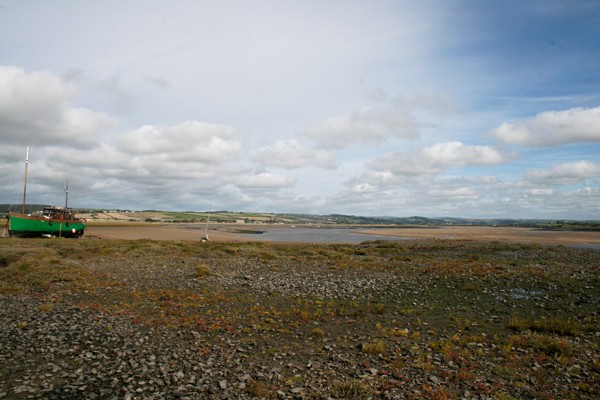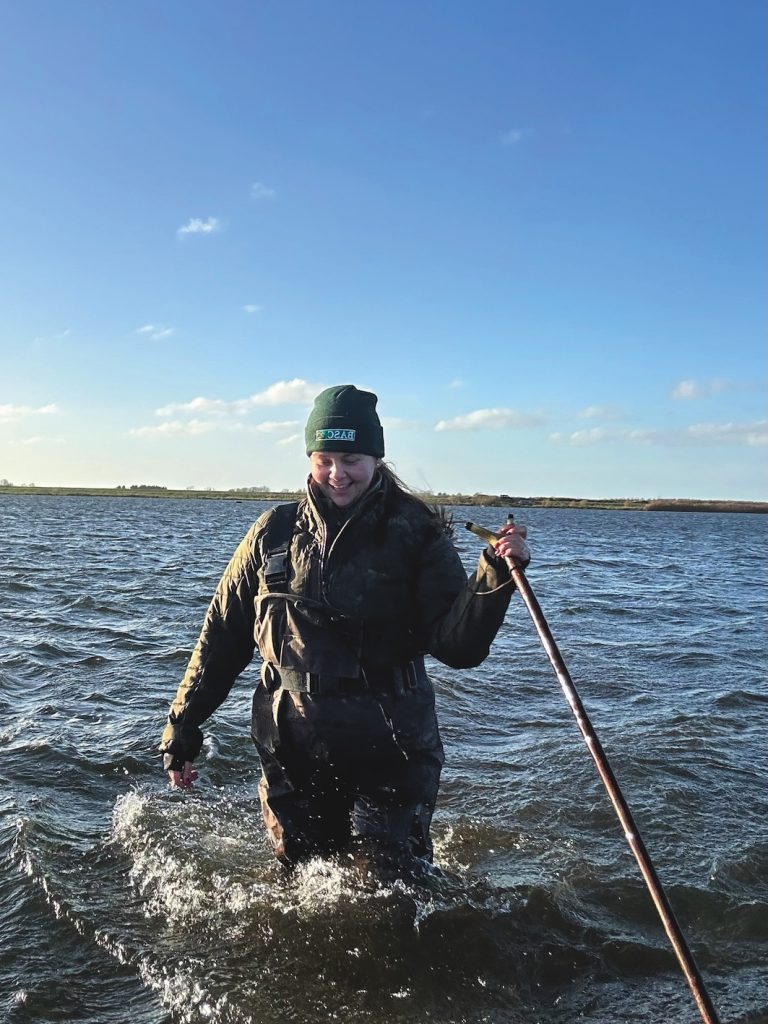Win CENS ProFlex DX5 earplugs worth £1,149 – enter here
Coast to Coast – Taw & Torridge
<strong>Kate Gatacre visits a vibrant club where two great Devon rivers converge, attracting passionate wildfowlers and pintail in equal strength</strong>

Between Barnstaple and Bideford, two rivers meet, forming a huge estuary. The Taw & Torridge Wildfowling Club, formed in 1975, takes full advantage of this, enjoying a Crown lease on some 650 hectares. I went down there to see the estuary in the middle of September. Unfortunately, the tides were all wrong for a flight, but vice chairman Eddie Renshaw kindly took the time to show me some of the clubs marshes and the estuary.
The tides are very dangerous here because of the fact that there are two estuaries converging. The water moves very fast and it can get very rough, Eddie told me. We had walked up to the top of the hill behind his house, which gave a glorious view of the estuary, particularly on such a clear day. Appledore sits out into the estuary, and, though the area is built up, Eddie assured me that there were some good solitary spots on the marshes. We dont shoot over all the land that we lease. Some of it is simply too close to houses, but we have plenty of areas to choose from. There are roughly 100 members at the moment, but many only go out once or twice a season, which means very low shooting pressure. We always welcome new members. There arent tickets or permits if you arent in the club, but each member is allowed to take two guests out a season.
The Taw & Torridge is one of the places that already has a coastal path. It doesnt seem to cause too much trouble, Eddie assured me. We are extremely aware of the public, however, and you do occasionally get shouted at. We dont rise to it and we have to be sensitive to the public while we are fowling. There are masses of fishermen, too, and I usually move if a fisherman pitches up while Im out. Its all about behaving sensibly.
We drove along the waters edge, stopping to walk over the marshes and out on to the hard shingle and sand. Sea purslane was still abundant and the last tips of marsh samphire were turning woody. On the edge of the sea wall was a vast wall of brambles, the blackberries shining and ready to be picked.
Eddie pointed out two large boats lying on the mudflats. That is one problem we do have, he said. These two boats have just pitched up. They moor here and there is very little we can do to move them on. Last year we had one houseboat that stayed here for months. It means we cant shoot nearby. Im not sure how we are going to deal with it.
The Taw & Torridge does not own any of its own land, but there is a strong fighting fund, so the club is ready to buy if any land becomes available. Weve been trying to find land to buy, but nothing suitable has come up so far. The problem is that Im not sure any will, said Eddie.
When the club was originally formed, it was to prevent the whole estuary from being made into a bird sanctuary, which would obviously have meant an end to wildfowling in the area. The estuaries were designated SSSI in 1988. It is also part of the North Devons Biosphere Reserve, which covers all the Burrows. As far as wildlife is concerned, there is plenty. Of the normal quarry species there is mallard, wigeon, teal, pintail and a rapidly expanding population of Canada geese. There are also masses of golden plover. Ive shot a few here, Eddie said. They make excellent eating. We get good numbers of snipe coming in, too. Im a member of a small syndicate shoot, and our land borders the foreshore, so you get the best of both worlds. Members of the syndicate have to be full members of the fowling club. It means that we can shoot for the day and then tack on a flight at the end.
On the opposite bank, over towards Appledore, lies the RSPBs Isley marsh. There are plenty of species to keep birdwatchers happy, Eddie told me, adding, I often see godwits, ospreys, short-eared owls and marsh harriers over the marshes and foreshore. We enjoy good relations with the RSPB, but there is quite a distance between where we shoot and Isley marsh. The main areas that we shoot are Penhill Marsh, Skern, Crow Point, Braunton Pill and Henton.
Prospective members for the Taw & Torridge can join at the beginning of the season and must attend two inductions, as well as the AGM. It is really important from the safety perspective, so the inductions give them a chance to meet other wildfowlers, but most importantly, to learn about the tides and the marshes and mudflats, said Eddie. Indeed, in 1988, an experienced wildfowler and a member of the club was lost on the foreshore. If you get a gale blowing in, the tides can rise incredibly fast. Of course, bad weather is the best fowling weather, so there are plenty wholl go out in terrible conditions, he continued.
The area covered by the club borders MOD land, and members are under strict instructions not to retrieve birds from there. There is a staffed guardhouse, however, where fowlers can inform someone if there is a bird that needs retrieving. The mudflats are vast, so dogs are a must in this area. The formation of the land is constantly changing, Eddie informed me. A channel can get silted up or a whole area of mud can be washed away, so it can be deceptive.
Taw & Torridge does much to promote itself, organising a clay pigeon shoot and the country pursuits arena at the North Devon Show. The show is what I really enjoy doing, said Eddie. It is a great way to bring in new members, as well as presenting a good face to the public. Eight or so new members joined after the show this year, which isnt bad.
There is also a compulsory duck return, which means that the club has extremely accurate records of the species shot over the past few years. There are several wardens, including Eddie, who keep a close watch over the area. With the area being closely populated and the MOD land and RSPB marsh, we dont tend to have problems from poachers, he told me. Eddies house up on the hill gives him the perfect vantage point as warden of the south estuary. The shooting areas are balanced out with reserve areas, so there are plenty of roosting and feeding sites for the birds. The lease was secured in 1996, with BASCs help, after nine years of negotiation with English Nature (now Natural England), the RSPB and the local town and parish councils. Straight after that, the club banned the use of lead on the foreshore.
It is clear from the effort put into wardening, raising money and presenting a good image to the wider public that the members of the Taw & Torridge prize their hard-won fowling as well as the miles of stunning foreshore at their disposal.
Related Articles
Get the latest news delivered direct to your door
Subscribe to Shooting Times & Country
Discover the ultimate companion for field sports enthusiasts with Shooting Times & Country Magazine, the UK’s leading weekly publication that has been at the forefront of shooting culture since 1882. Subscribers gain access to expert tips, comprehensive gear reviews, seasonal advice and a vibrant community of like-minded shooters.
Save on shop price when you subscribe with weekly issues featuring in-depth articles on gundog training, exclusive member offers and access to the digital back issue library. A Shooting Times & Country subscription is more than a magazine, don’t just read about the countryside; immerse yourself in its most authoritative and engaging publication.







